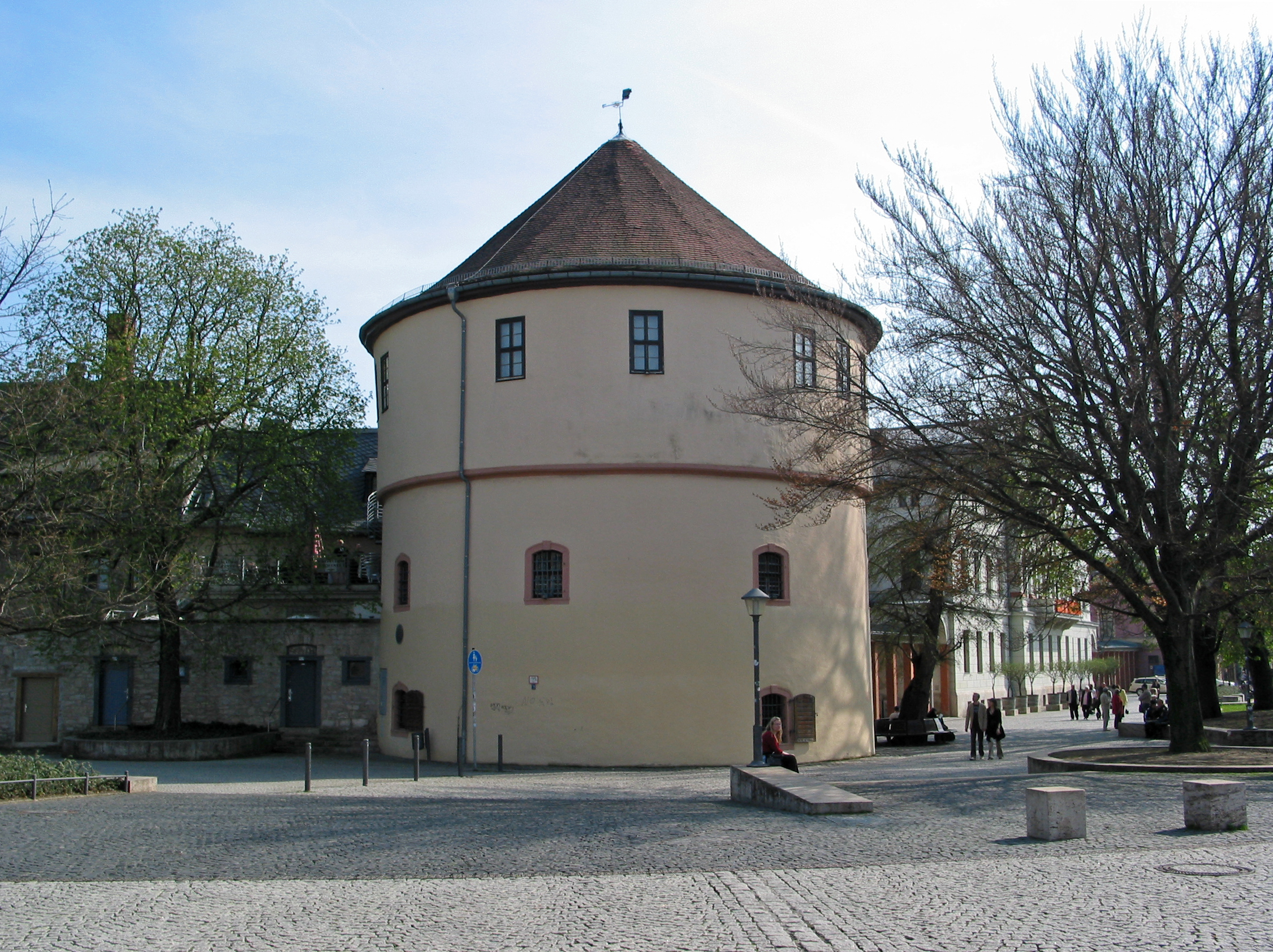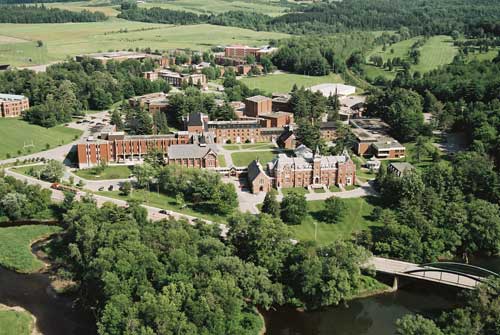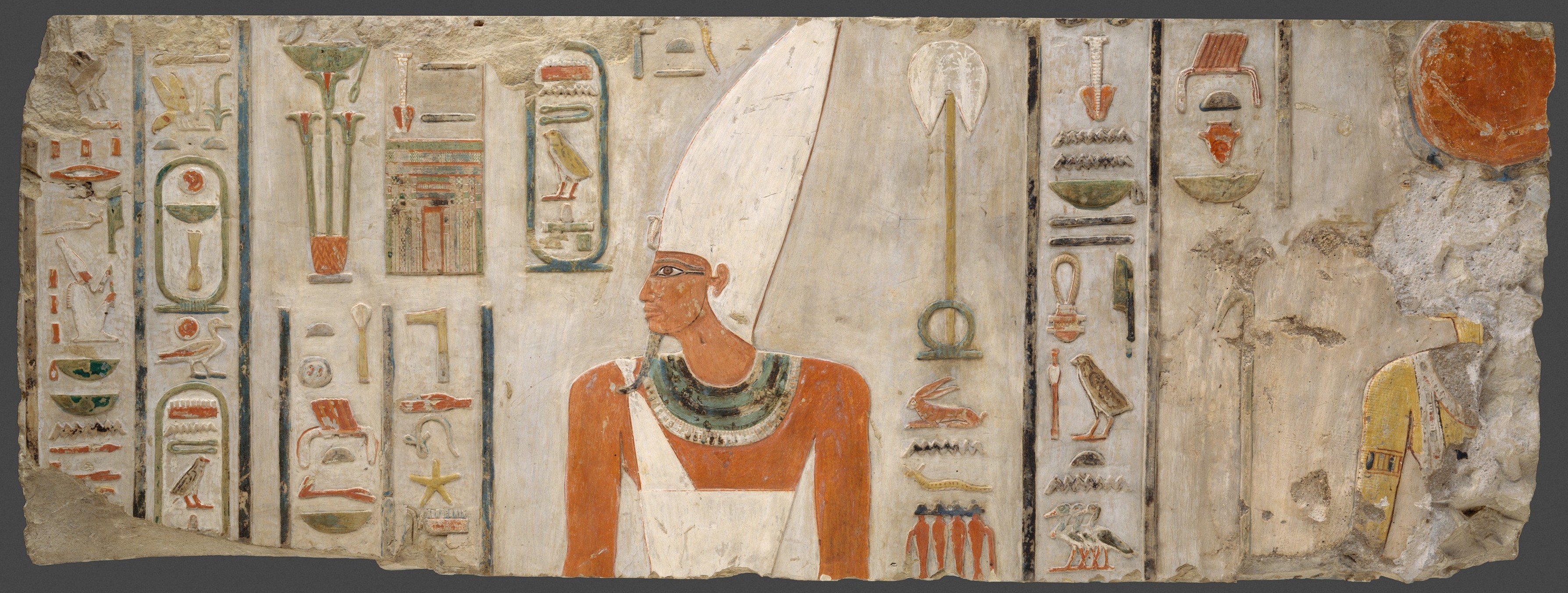|
Winifred Needler
Winifred Needler DCL (June 14, 1904 – September 5, 1987) was a German-born Canadian Egyptologist at the Museum of Ontario Archaeology, where she rose to be keeper of the Near Eastern Collections and later curator of the Egyptian Department. She also taught at the University of Toronto. Early life and education Winifred Ellen Needler was born in Weimar, Germany, to Mary Winifred (Chisholm) Needler and George Henry Needler, a professor of German at the University of Toronto. She was known to family and friends as 'Friedel' or 'Friedl'. She was educated at St. Margaret's College and Oakwood Collegiate Institute, following which she got her B.A. in modern languages and philosophy at University College, Toronto. She then spent a year studying art at the Ontario College of Art. In 1928 she moved to Boston, Massachusetts, to study at the School of Fine Arts and Crafts, where she won a number of prizes for her artwork. Career For five years Needler struggled to make a living as a c ... [...More Info...] [...Related Items...] OR: [Wikipedia] [Google] [Baidu] |
Weimar, Germany
Weimar is a city in the state of Thuringia, Germany. It is located in Central Germany between Erfurt in the west and Jena in the east, approximately southwest of Leipzig, north of Nuremberg and west of Dresden. Together with the neighbouring cities of Erfurt and Jena, it forms the central metropolitan area of Thuringia, with approximately 500,000 inhabitants. The city itself has a population of 65,000. Weimar is well known because of its large cultural heritage and its importance in German history. The city was a focal point of the German Enlightenment and home of the leading figures of the literary genre of Weimar Classicism, writers Johann Wolfgang von Goethe and Friedrich Schiller. In the 19th century, noted composers such as Franz Liszt made Weimar a music centre. Later, artists and architects such as Henry van de Velde, Wassily Kandinsky, Paul Klee, Lyonel Feininger, and Walter Gropius came to the city and founded the Bauhaus movement, the most important German design ... [...More Info...] [...Related Items...] OR: [Wikipedia] [Google] [Baidu] |
Kathleen Kenyon
Dame Kathleen Mary Kenyon, (5 January 1906 – 24 August 1978) was a British archaeologist of Neolithic culture in the Fertile Crescent. She led excavations of Tell es-Sultan, the site of ancient Jericho, from 1952 to 1958, and has been called one of the most influential archaeologists of the 20th century. She was Principal of St Hugh's College, Oxford, from 1962 to 1973 and studied herself at Somerville College, Oxford . Biography Kathleen Kenyon was born in London, England, in 1906. She was the eldest daughter of Sir Frederic Kenyon, biblical scholar and later director of the British Museum . Her grandfather was lawyer and Fellow of All Souls College, John Robert Kenyon, and her great-great-grandfather was the politician and lawyer Lloyd Kenyon, 1st Baron Kenyon. She grew up in Bloomsbury, London, in a house attached to the British Museum, with her mother, Amy Kenyon, and sister Nora Kenyon . Known for being hard-headed and stubborn, Kathleen grew up as a tomboy, fi ... [...More Info...] [...Related Items...] OR: [Wikipedia] [Google] [Baidu] |
1904 Births
Nineteen or 19 may refer to: * 19 (number), the natural number following 18 and preceding 20 * one of the years 19 BC, AD 19, 1919, 2019 Films * ''19'' (film), a 2001 Japanese film * ''Nineteen'' (film), a 1987 science fiction film Music * 19 (band), a Japanese pop music duo Albums * ''19'' (Adele album), 2008 * ''19'', a 2003 album by Alsou * ''19'', a 2006 album by Evan Yo * ''19'', a 2018 album by MHD * ''19'', one half of the double album '' 63/19'' by Kool A.D. * '' Number Nineteen'', a 1971 album by American jazz pianist Mal Waldron * ''XIX'' (EP), a 2019 EP by 1the9 Songs * "19" (song), a 1985 song by British musician Paul Hardcastle. * "Nineteen", a song by Bad4Good from the 1992 album ''Refugee'' * "Nineteen", a song by Karma to Burn from the 2001 album ''Almost Heathen''. * "Nineteen" (song), a 2007 song by American singer Billy Ray Cyrus. * "Nineteen", a song by Tegan and Sara from the 2007 album '' The Con''. * "XIX" (song), a 2014 song by Slip ... [...More Info...] [...Related Items...] OR: [Wikipedia] [Google] [Baidu] |
Royal Ontario Museum
The Royal Ontario Museum (ROM) is a museum of art, world culture and natural history in Toronto, Ontario, Canada. It is one of the largest museums in North America and the largest in Canada. It attracts more than one million visitors every year, making the ROM List of most-visited museums by region, the most-visited museum in Canada. The museum is north of Queen's Park (Toronto), Queen's Park, in the University of Toronto district, with its main entrance on Bloor Street, Bloor Street West. Museum station (Toronto), Museum subway station is named after the ROM and, since a 2008 renovation, is decorated to resemble the institution's collection at the platform level. Established on April 16, 1912, and opened on March 19, 1914, the museum has maintained close relations with the University of Toronto throughout its history, often sharing expertise and resources. The museum was under the direct control and management of the University of Toronto until 1968, when it became an independe ... [...More Info...] [...Related Items...] OR: [Wikipedia] [Google] [Baidu] |
Bishop's University
Bishop's University (french: Université Bishop's) is a small English-language liberal arts university in Lennoxville, a borough of Sherbrooke, Quebec, Canada. The founder of the institution was the Anglican Bishop of Quebec, George Mountain, who also served as the first principal of McGill University. It is one of three universities in the province of Quebec that teach primarily in English (the others being McGill University and Concordia University, both in Montreal). It began its foundation by absorbing the Lennoxville Classical School as Bishop's College School in the 1840s. The college was formally founded in 1843 and received a royal charter from Queen Victoria in 1853. It remains one of Canada's few primarily undergraduate universities, functioning in the way of an American liberal arts college, and is linked with three others in the Maple League. Established in 1843 as Bishop's College, the school used to be affiliated with the University of Oxford in 1853, where many pro ... [...More Info...] [...Related Items...] OR: [Wikipedia] [Google] [Baidu] |
Prehistoric Egypt
Prehistoric Egypt and Predynastic Egypt span the period from the earliest human settlement to the beginning of the Early Dynastic Period around 3100 BC, starting with the first Pharaoh, Narmer for some Egyptologists, Hor-Aha for others, with the name Menes also possibly used for one of these kings. At the end of prehistory, "Predynastic Egypt" is traditionally defined as the period from the final part of the Neolithic period beginning c. 6000 BC to the end of the Naqada III period c. 3000 BC. The dates of the Predynastic period were first defined before widespread archaeological excavation of Egypt took place, and recent finds indicating very gradual Predynastic development have led to controversy over when exactly the Predynastic period ended. Thus, various terms such as " Protodynastic period", "Zero Dynasty" or "Dynasty 0" are used to name the part of the period which might be characterized as Predynastic by some and Early Dynastic by others. The Predynastic period is gene ... [...More Info...] [...Related Items...] OR: [Wikipedia] [Google] [Baidu] |
Brooklyn Museum
The Brooklyn Museum is an art museum located in the New York City borough of Brooklyn. At , the museum is New York City's second largest and contains an art collection with around 1.5 million objects. Located near the Prospect Heights, Crown Heights, Flatbush, and Park Slope neighborhoods of Brooklyn, the museum's Beaux-Arts building was designed by McKim, Mead and White. The Brooklyn Museum was founded in 1898 as a division of the Brooklyn Institute of Arts and Sciences and was planned to be the largest art museum in the world. The museum initially struggled to maintain its building and collection, only to be revitalized in the late 20th century, thanks to major renovations. Significant areas of the collection include antiquities, specifically their collection of Egyptian antiquities spanning over 3,000 years. European, African, Oceanic, and Japanese art make for notable antiquities collections as well. American art is heavily represented, starting at the Colonial p ... [...More Info...] [...Related Items...] OR: [Wikipedia] [Google] [Baidu] |
Charles Edwin Wilbour
Charles Edwin Wilbour (March 17, 1833 – December 17, 1896) was an American journalist and Egyptologist. Wilbour is noted as one of the discoverers of the Elephantine Papyri and the creator of the first English translation of ''Les Misérables''. Biography Charles Edwin Wilbour was born in Little Compton, Rhode Island, on March 17, 1833. He received a classical education and entered Brown University, where he took a prize for proficiency in Greek and was noted for his thorough acquaintance with the ancient and modern languages, but did not graduate due to poor health. Having taught himself shorthand, when he had sufficiently recovered, he went to New York City in 1854 and became connected with the ''New York Herald Tribune'' as a reporter. Wilbour also studied law and was admitted to the bar in 1859. Over the following eighteen years, he devoted himself to literary and journalistic work. In 1872, Wilbour began the study of Egyptian antiquities, visiting the principal librarie ... [...More Info...] [...Related Items...] OR: [Wikipedia] [Google] [Baidu] |
New Kingdom Of Egypt
The New Kingdom, also referred to as the Egyptian Empire, is the period in ancient Egyptian history between the sixteenth century BC and the eleventh century BC, covering the Eighteenth, Nineteenth, and Twentieth dynasties of Egypt. Radiocarbon dating places the beginning of the New Kingdom between 1570 BC and 1544 BC. The New Kingdom followed the Second Intermediate Period and was succeeded by the Third Intermediate Period. It was Egypt's most prosperous time and marked the peak of its power. The concept of a "New Kingdom" as one of three "golden ages" was coined in 1845 by German Egyptologist Baron von Bunsen, and its definition would evolve significantly throughout the nineteenth and twentieth centuries. The later part of this period, under the Nineteenth and Twentieth dynasties (1292–1069 BC), is also known as the ''Ramesside period''. It is named after the eleven pharaohs who took the name Ramesses, after Ramesses I, the founder of the Nineteenth Dynasty. Possib ... [...More Info...] [...Related Items...] OR: [Wikipedia] [Google] [Baidu] |
Middle Kingdom Of Egypt
The Middle Kingdom of Egypt (also known as The Period of Reunification) is the period in the history of ancient Egypt following a period of political division known as the First Intermediate Period. The Middle Kingdom lasted from approximately 2040 to 1782 BC, stretching from the reunification of Egypt under the reign of Mentuhotep II in the Eleventh Dynasty to the end of the Twelfth Dynasty. The kings of the Eleventh Dynasty ruled from Thebes and the kings of the Twelfth Dynasty ruled from el-Lisht. The concept of the Middle Kingdom as one of three golden ages was coined in 1845 by German Egyptologist Baron von Bunsen, and its definition evolved significantly throughout the 19th and 20th centuries. Some scholars also include the Thirteenth Dynasty of Egypt wholly into this period, in which case the Middle Kingdom would end around 1650 BC, while others only include it until Merneferre Ay around 1700 BC, last king of this dynasty to be attested in both Upper and Lower E ... [...More Info...] [...Related Items...] OR: [Wikipedia] [Google] [Baidu] |
Queen Hatshepsut
Hatshepsut (; also Hatchepsut; Egyptian: '' ḥꜣt- špswt'' "Foremost of Noble Ladies"; or Hatasu c. 1507–1458 BC) was the fifth pharaoh of the Eighteenth Dynasty of Egypt. She was the second historically confirmed female pharaoh, after Sobekneferu. (Various other women may have also ruled as pharaohs or at least regents before Hatshepsut, as early as Neithhotep around 1,600 years prior.) Hatshepsut came to the throne of Egypt in 1478 BC. As the principal wife of Thutmose II, Hatshepsut initially ruled as regent to Thutmose III, a son of Thutmose II by another wife and the first male heir. While Thutmose III had inherited the throne at about two years old, Hatshepsut continued to rule by asserting her lineage as the daughter and only child of Thutmose I and his primary wife, Ahmose. Her husband Thutmose II was the son of Thutmose I and a secondary wife named Mutnofret, who carried the title 'King's daughter' and was probably a child of Ahmose I. Hatshepsut and Thutm ... [...More Info...] [...Related Items...] OR: [Wikipedia] [Google] [Baidu] |
Aswan Dam
The Aswan Dam, or more specifically since the 1960s, the Aswan High Dam, is one of the world's largest embankment dams, which was built across the Nile in Aswan, Egypt, between 1960 and 1970. Its significance largely eclipsed the previous Aswan Low Dam initially completed in 1902 downstream. Based on the success of the Low Dam, then at its maximum utilization, construction of the High Dam became a key objective of the government following the Egyptian Revolution of 1952; with its ability to better control flooding, provide increased water storage for irrigation and generate hydroelectricity, the dam was seen as pivotal to Egypt's planned industrialization. Like the earlier implementation, the High Dam has had a significant effect on the economy and culture of Egypt. Before the High Dam was built, even with the old dam in place, the annual flooding of the Nile during late summer had continued to pass largely unimpeded down the valley from its East African drainage basin. These fl ... [...More Info...] [...Related Items...] OR: [Wikipedia] [Google] [Baidu] |





